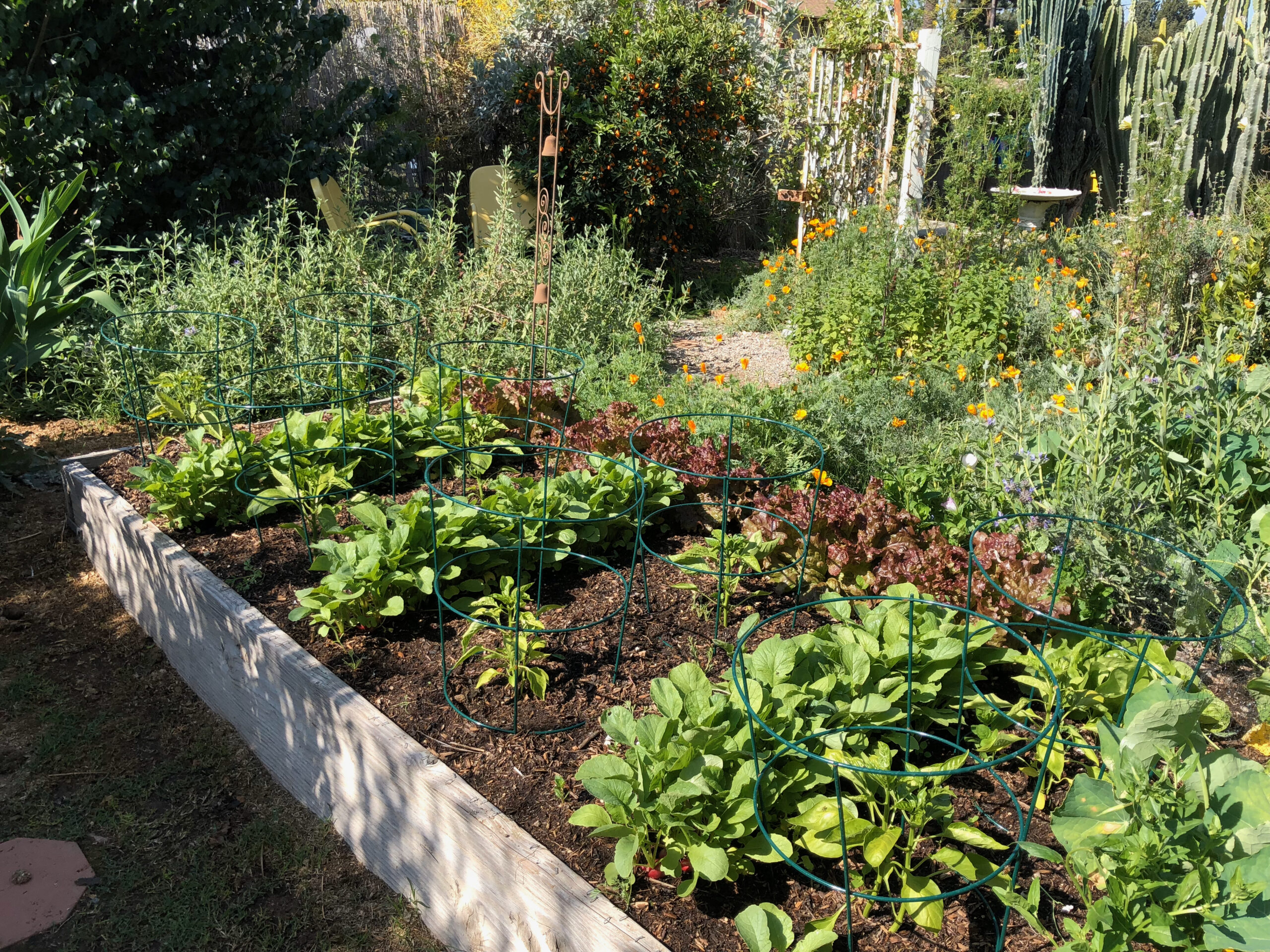May is the best month to plant your summer vegetable garden. Before you put those baby tomato, eggplant, and pepper seedlings into the ground, refresh the soil for maximum production.
Step #1: Check the soil level.
 Raised beds and planting containers should be full to within one or two inches of the top. Over time, the organic matter breaks down, and you’ll notice the soil mixture sink lower and lower. If they need a refill, here’s how:
Raised beds and planting containers should be full to within one or two inches of the top. Over time, the organic matter breaks down, and you’ll notice the soil mixture sink lower and lower. If they need a refill, here’s how:
- For raised beds use for a 60/40 topsoil mix – which is 60% “dirt” mixed with 40% compost. Don’t bother with bagged raised bed mixes.
- For potting mix, go with the highest quality potting mix (not garden soil, not planting mix, not compost) you can find. Your plants will do only as well as the planting mix they grow in. Use the best for your plants to grow their best.
Step #2: Amend the soil.
We don’t amend soil for ornamental plants, but annual vegetables, herbs, and flowers need rich, moist, high nutrient soils. So, before you plant, mix in:

- Organic granular vegetable fertilizer. Many great brands are available. Whichever you choose, follow label directions.
- Worm castings. If you worm compost at home, add your home-made worm castings to your garden beds or containers. Purchased worm castings are just as good. All worm castings jump start beneficial microbes in your garden beds. There is no exact prescription for how much to use. Purchased worm castings typically come in an 8-quart bag. I use one bag for two, 8’ x 4’ raised beds. Sprinkle worm castings over the soil surface like a heavy layer of powdered sugar.
Step #3: Combine
Use a hand trowel to mix soil amendments into the top few inches of soil or potting mix.
Step #4: Saturate the soil with water.
That’s it – you’re ready to plant!





